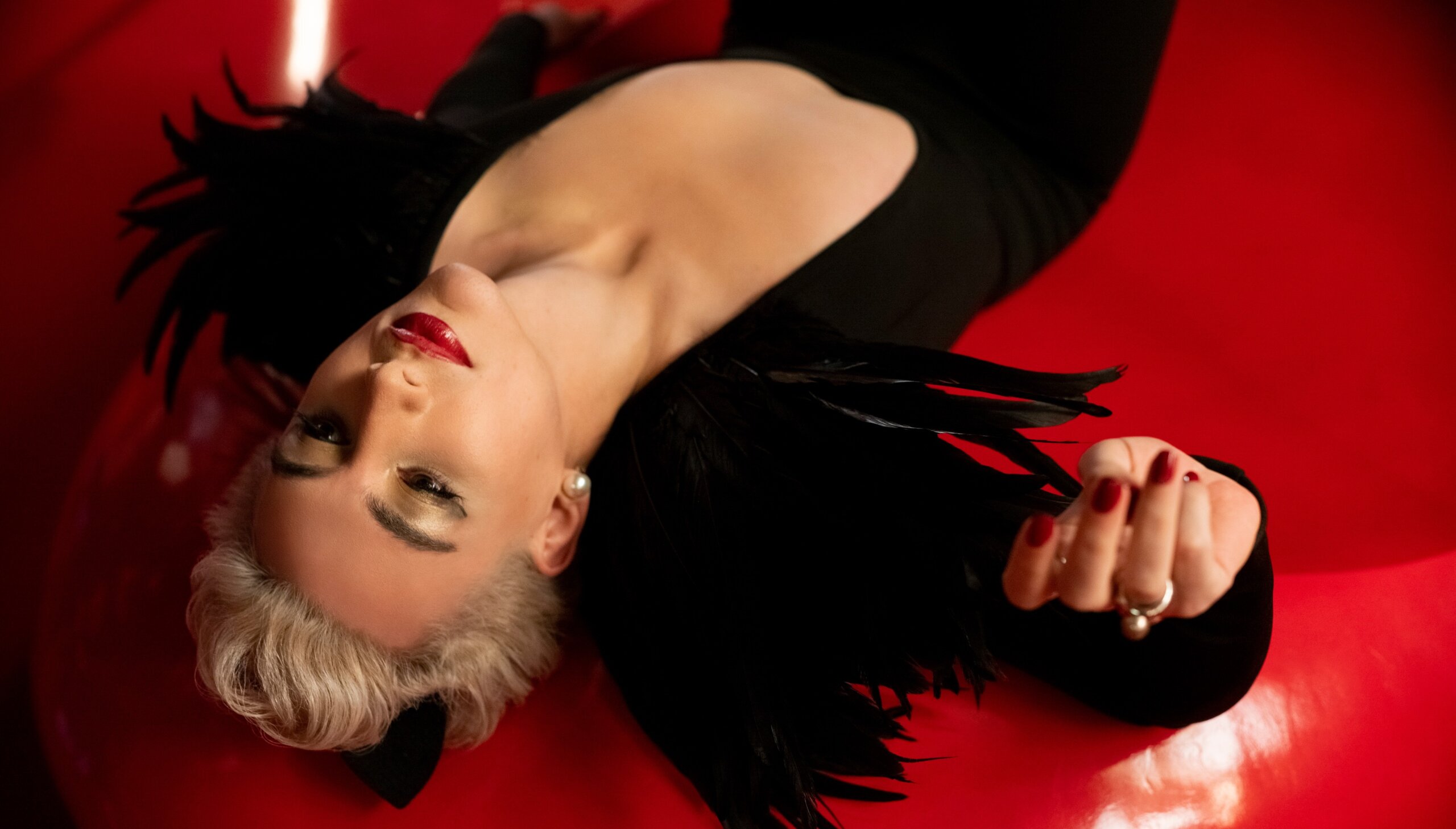From Hedwig (of Angry Inch fame) to a non-binary reimagination of a beloved anime character to now one of comics’s most prominent gender-fluid characters, Mason Alexander Park has quickly become a go-to casting choice for some of pop culture’s most notable non-binary and gender-defying roles.
Fresh off giving their own spin to fan-favourite character Gren in the live-action Netflix adaptation of anime Cowboy Bebop, Park returns to the streamer as part of the sprawling cast of The Sandman, playing Desire, arguably one of the most famous (and earliest) non-binary characters in modern mainstream pop culture.
The Sandman, the long-awaited adaptation of the acclaimed early 1990s comics series of the same name by Neil Gaiman, follows Dream/Morpheus (Tom Sturridge) the king of dreams. Dream is one of the seven Endless, a family of personifications of powerful forces in the universe. The others include Death, Delirium, Despair, Destiny, Destruction and Park’s Desire.
Throughout Gaiman’s original series, Desire was written as androgynous and appeared as a man, a woman, something in between and something completely separate. Gaiman took to social media last year to respond to the backlash against casting the openly non-binary Park in the role, with Gaiman arguing that the character has always been non-binary.
Because of this history and Gaiman’s outspoken support for the LGBTQ2S+ community, Desire has long been embraced by queer and trans fans as an early example of non-binary representation in popular media. But with various adaptations of the sprawling series languishing in development hell for decades, it was unclear when that representation would make it to the big screen.
Now, The Sandman is finally streaming on Netflix, with Park sliding into Desire’s seductive shoes. Of course, even before Desire and Cowboy Bebop, the 27-year-old Park was no stranger to beloved gender-defying roles, having taken on the titular role in the national touring production of the musical comedy-drama Hedwig and the Angry Inch.
We spoke to Park about sliding into Neil Gaiman’s DMs, setting the bar for representation and the utopian experience of playing trans characters who don’t have to worry about all of the terrible stuff going on in our world right now.
You ended up getting this role in an unconventional way. Can you talk a bit about how that happened?
I was quarantined in New Zealand because I was about to start work on Cowboy Bebop. I had just been left to my own devices for a little too long, so I think I was growing a bit loopy. And Neil [Gaiman] has always been very active on social media, and his Twitter just constantly updating people on the creation of the Sandman series, which at the time had just gone back into production.
He was just giving people a lot of updates and it put it back in my mind … and I was like, “I love that character, Desire, and I think that I would do a decent job.” So it was, like, 4 a.m. and I was pretty delirious and I just thought instead of texting my agents and waiting however long it might take to find out who the casting director and all those things are, I’ll just tweet Neil because he’s always replying to random things.
I just wanted to know if Desire was even going to make an appearance in Season 1, since the character doesn’t show up until later in the comics. He got back to me within 15 minutes and was just sort of like, “Yeah, Desire’s in Season 1 and this is the casting director’s information.” I learned recently that he then quietly watched some videos of me on the internet and sent them to our showrunner Allan Heinberg and said, “I think we found our Desire.” Maybe a month or two later, right around when I was finishing shooting Cowboy Bebop, I had an audition and then found out as soon after we wrapped that show that that was going to be my next job.
You mentioned being familiar with the comic and the character. How did that come into your life?
I didn’t have the opportunity to really read the entire thing from beginning to end when I was growing up. It just wasn’t one of the comics that I had directly been collecting with my dad or anything. But I was always a huge fan of Neil and his other works. Later on, in my later teens and early 20s, I remember trying to research more gender nonconforming and trans and non-binary characters in popular media and comic books, that sort of thing. Obviously, Desire is one of the more high-profile ones, and one of the few that exists in the comic book world.
So that reignited my interest in the property when I got a little older. So then when [plans to adapt the series] came about, I was like, “It’s all connected.” I thought maybe it’s time to really dig into it. So I re-read the whole thing and started listening to the audiobook.
Your character Gren in Cowboy Bebop was also written to be non-binary. I’m curious about how, as a non-binary person, you bring those parts of your personal self into these roles.
Both Desire and Gren exist in worlds in which they are not an abnormality. They are not marginalized in the same way that, you know, we are in real life at this moment.
Gren and Desire both exist in universes in which their existence isn’t really commented on or experienced as a new or unusual thing. So, strangely enough, I feel like playing the parts is even more liberating than sometimes being myself, because they don’t deal with the issues that we have to deal with in the real world that are so wrapped up in legislation and fear and trying to understand how we fit into the greater conversation.
It’s offered me some escapism from that in very small moments. Just the chance to play a character and talk about choices and about intention and things like any other cisgender actor might experience on a set, without my entire plotline being wrapped around a trans journey, or a medical or social transition or an uncovering of identity at all—that was great. These are fully formed human beings who just happened to identify this way, and no one’s going to talk about it, and we’re not going to comment on it and they’re going to be attractive characters that people have interest in. It’s very utopian in a really fun, liberating way.
Yeah, I mean, you’re literally the embodiment of Desire, that’s, like, the most attractive you can be. A lot of queer and trans fans really connect to The Sandman as a story. What is it about the broader story and this character that you think connects to folks from our community in that way?
Some of it just comes down to the representation that’s in the comics. There really wasn’t a lot of queer and trans and non-binary representation in popular media [in the 1990s], especially written by someone as prolific as Neil Gaiman. For him to have multiple characters whoidentified in a non-heteronormative way, you know, really is a testament to how he saw the world and to the kinds of people that he was friends with and the kinds of people that you wanted to tell stories about.
It’s really amazing to see Neil’s perspective of the world and of the trans experience. There is no way that one person can encapsulate all of these ideas and experiences—especially because, obviously, the queer community is not a monolith and in no way has any major consistencies beyond the general feeling of otherness that we all experience.
[One thing] in this version of Sandman that I think is a major departure, or one of the few departures from the comics, is that there is no othering of any queerness in this series. I was struck in a deeply profound and emotional way when I watched the show by the fact that there are more queer characters and more examples of just the normalization of queerness in this show, then there even are heteronormative characters on the show.
More of the leads and more of the people who are shown having relationships, whether they’re good individuals or bad individuals or neutral individuals, more of them actually are queer to some capacity, whether that’s in gender or in sexuality. I don’t think I can really think of any other franchise or property quite like this, that did it in such a way that isn’t commented on. It’s just the world that we live in.
Do you see that as kind of setting a bar that other shows are going to have to meet going forward?
I hope that the inclusion of a diverse group of individuals, both in front of the screen and behind the camera, will continue to have profound ripple effects in the entertainment industry. So often, I think we put people in things that kind of check very specific boxes, and then we go “Well, we did the job, we have that one queer character, and that’s enough.”
I don’t think there ever has to be a moment where you’re at capacity with marginalized characters, or people who have a different experience that isn’t just white, and cis and heteronormative. Because the world doesn’t look like that in any capacity.
How have you thought about queer joy, about trans joy, in the context of your work?
It looks different every day. Right now, for me, I think it looks like being included in something that is so beloved and a representation of humanity. The fact that I get to be a part of it and get to play one of the most important aspects of the human experience, one of the most important aspects of the universe, in my body as a trans, non-binary, Mexican, Spanish Indigenous individual with so many moments of intersectionality—to be able to represent something that is representing beauty and need and love and want. It says a lot about where we are in the world and says a lot about Neil’s perception of the world and Allan’s perception of the world. For me, just being here, and being able to be somewhere I never thought I could be when I was younger, that’s what queer joy looks like for me right now.
Interview has been edited for length and clarity.


 Why you can trust Xtra
Why you can trust Xtra


